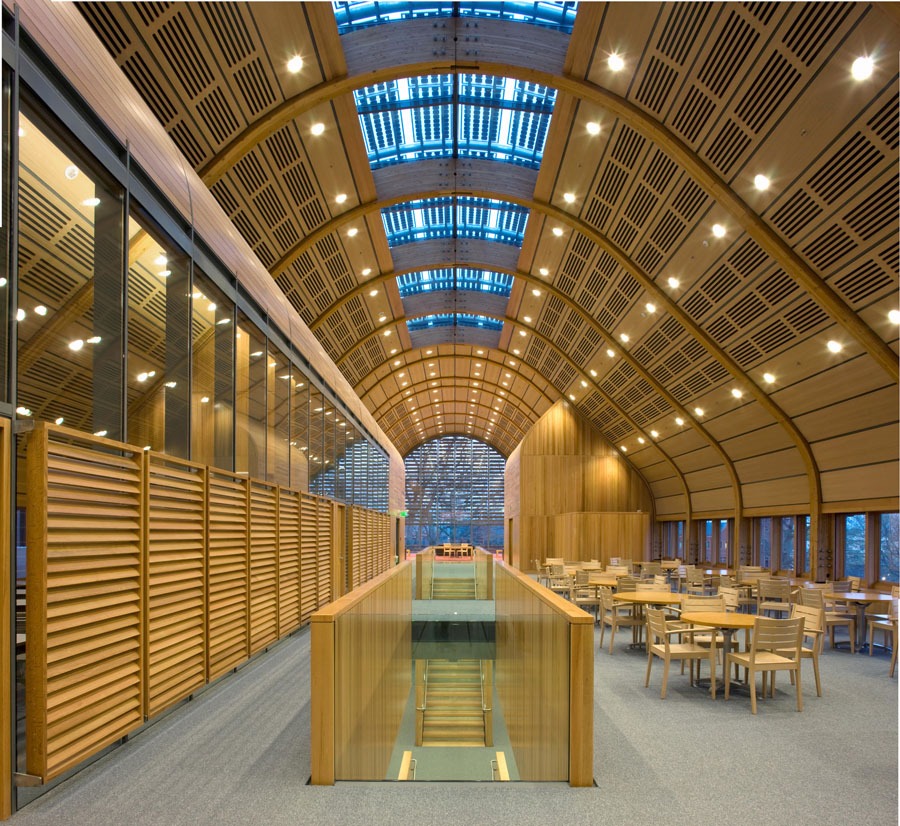Across the globe, architects are “paying a whole lot of attention to Glulam, the high-tech building material that is changing the scale of what is architecturally possible using timber, and the engineered wood being specified for its strength, beauty and reliability.”
Made of layers of structural timber that have been bonded together, the material can be manufactured into a variety of structural components, “including parallel beams, pre-cambered beams, sloped beams, curved beams, flight beams and trusses.” And its environmental advantages are significant. After all, “wood is the only material that architects can build with that is grown by the power of the sun.
- Wood Grade: The ANSI A190.1 Standard — the APA’s standard for wood products — establishes nationally recognized requirements for the production and certification of structural glued laminated timber. These standards provide four appearance grades for glulam products: Framing, Industrial, Architectural and Premium.
- Applications: Common applications of glulam include floors, roofs, walls, shear walls and cores. Because of the material’s inherent load-bearing strength, glulam is appropriate in vertical and horizontal assembly applications.”
- Wood Species: In addition to softwoods, hardwood species such as Oak, Tulipwood and Sweet Chestnut are used. And an “added bonus of glulam is that manufacturers can harness small pieces of wood that would have otherwise gone to waste.
- Sustainability: One cubic-meter of wood can sequester one ton of carbon-dioxide. And according to a 2014 study published in the Journal of Sustainable Forestry, as much as 31 percent of global carbon dioxide emissions could be avoided by building with wood instead of steel and concrete.
Bottom Line: Timber architecture — in all shapes and sizes — is rising to exciting new heights. And as steel and concrete gradually fall to the wayside due to their steep environmental costs, engineering Glulam into a building can produce a lighter weight structure with a lesser carbon footprint.”
Information source: architizer.com

Yale’s Kroon Hall
Photo Courtesy: Morley von Sternberg



